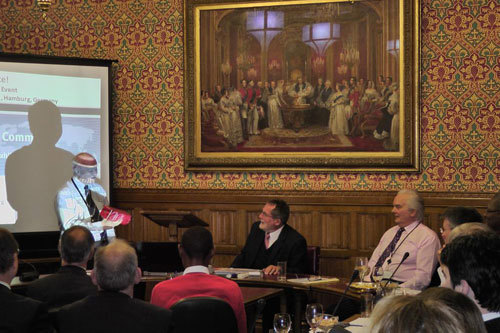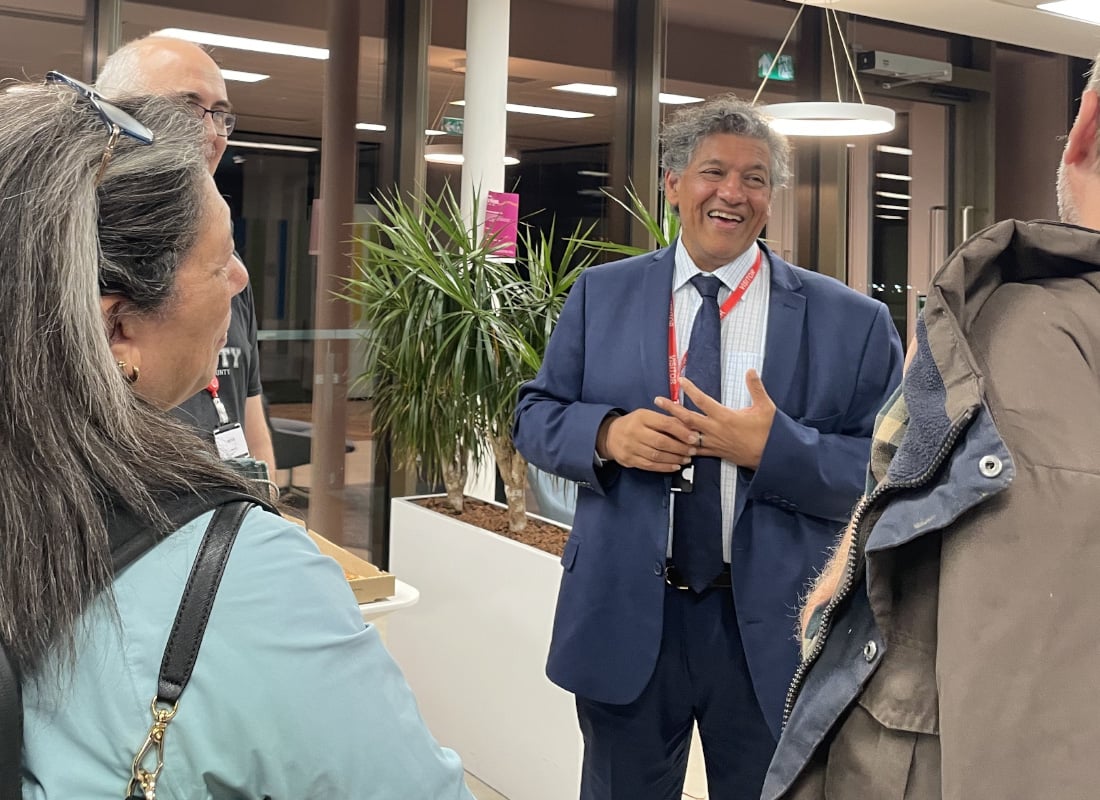
This event was The Second Lorraine King Memorial Lecture, sponsored by Kevin Cahill, FBCS.CITP (author of “Who owns Britain” and “Who owns the World”), and superbly hosted by the Lord Laird and Computer Weekly. The main topic of debate centred on whether Supercomputers were merely “prestige objects or crucial tools in science and industry”.

Figure: (L-R) Kevin Cahill, Prof. Meuer and Lord Laird
The lecture delivered by Supercomputer expert, Prof. Dr. Hans Werner Meuer, (see CV) was most illuminating, and I gathered, among other things, that the UK ranked 4th in the Top500 list of Supercomputer using countries, and that France was the only European country with any capability to manufacture Supercomputers. Clearly more needs to be done by the likes of the UK or Germany to remain competitive in the Supercomputing stakes, which begged the question, (as posed later by an attendee), of whether these machines were nothing more than objects of geopolitical prestige, superiority and / or bragging rights, (e.g. My Supercomputer is faster than yours, so Nyah-nyah, nyah-nyah nyah-nyah! - Or perhaps Na na, na, na, naa! - apologies to the Kaiser Chiefs).
In any case, several things stood out for me at this rather well attended event, including:
- The definition of a Supercomputer remains based on the most powerful or fastest computers, at any given point in time, e.g. Apple’s iPad 2 is two-thirds as powerful as the Cray2 Supercomputer from 1986. The typical measure of speed and power is based on sheer numerical processing power (i.e. not data crunching), using the Linpack test
- According a paper by Sponsor, Kevin Cahill, the Supercomputer sector is the fastest growing niche in the world of technology, and it is currently worth some $25Billion. Japan, China and the USA are currently holding the lead in the highly ego driven world of Supercomputing, but there is an acute shortage of the skills and applications required to make the most of these amazing machines
- Typical applications of Supercomputing include: university research, medicine (e.g. Human Genome Project), geophysics, global weather and climate research, transport or logistics. It is used in various industries e.g.: Aerospace, Energy, Finance and Defence etc. More recent applications, and aspirations, include: bio-realistic simulations (e.g. the Blue Brain Project), and a shift towards data crunching in order to model and tackle challenges in such areas as Social Networks and Big Data.
- The future of Supercomputers is to move past the Petaflop Supercomputers of today, to Exaflop capable machines by 2018.

Figure: The Future of Supercomputing (Source: www.isc-events.com/slides/london)
Overall, this was an excellent event, in a most impressive venue, and the attendees got a chance to weigh in with various opinions, questions and comments to which the good Professor did his best to respond, (including inviting everyone to Hamburg, in June, to come see for themselves!). Perhaps the most poignant take away of the evening, in my opinion, was the challenge by Lord Laird to the computing industry about a certain lack visibility, and the need for us to become more vocal in expressing our wishes, concerns and desires to those in power, or at least to those with the responsibility to hold Government to account. As he eloquently put it, (but paraphrasing slightly), “If we don’t know who you are, or what it is you want, then that is entirely your own fault!”












